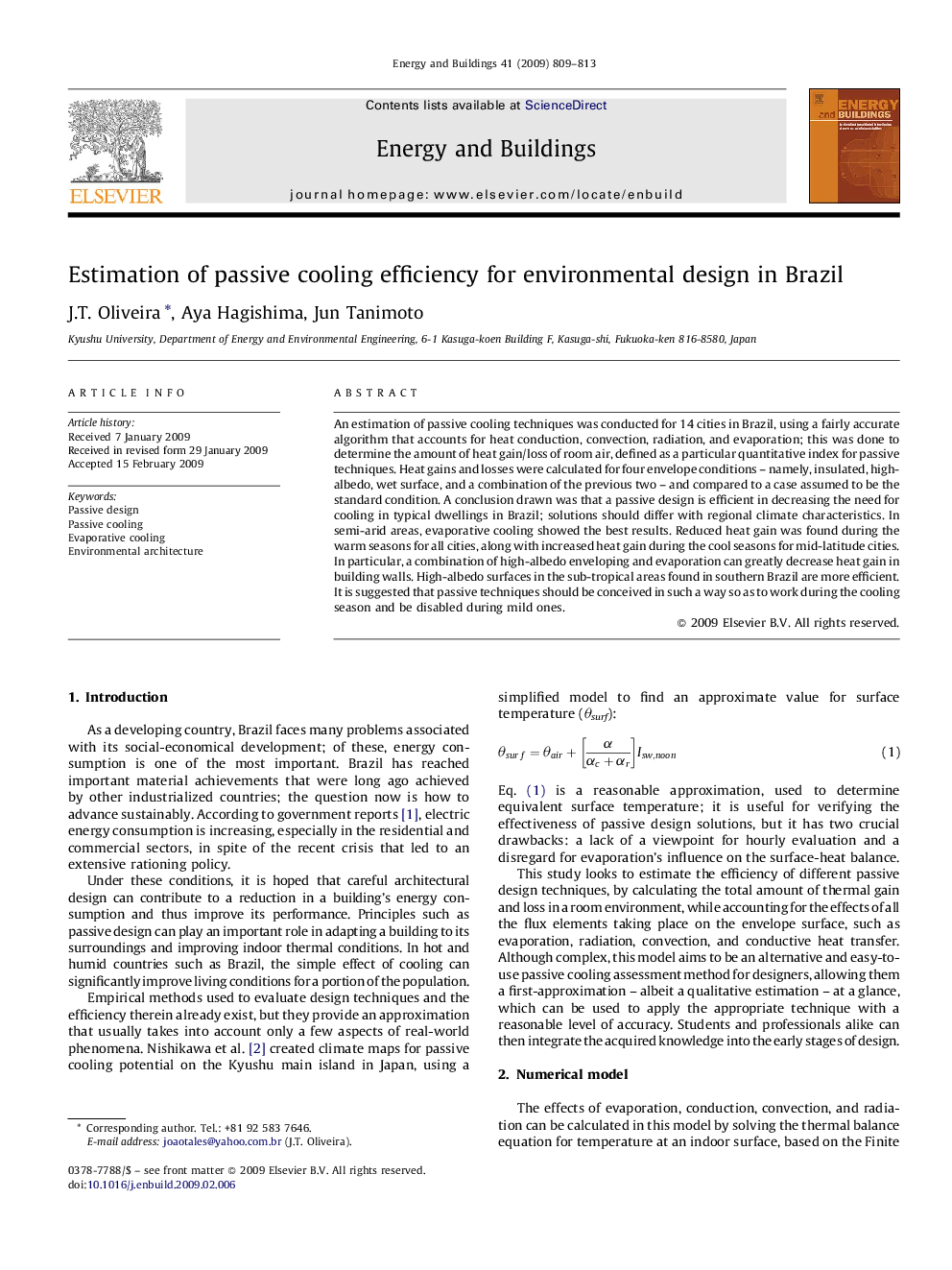| Article ID | Journal | Published Year | Pages | File Type |
|---|---|---|---|---|
| 264889 | Energy and Buildings | 2009 | 5 Pages |
An estimation of passive cooling techniques was conducted for 14 cities in Brazil, using a fairly accurate algorithm that accounts for heat conduction, convection, radiation, and evaporation; this was done to determine the amount of heat gain/loss of room air, defined as a particular quantitative index for passive techniques. Heat gains and losses were calculated for four envelope conditions – namely, insulated, high-albedo, wet surface, and a combination of the previous two – and compared to a case assumed to be the standard condition. A conclusion drawn was that a passive design is efficient in decreasing the need for cooling in typical dwellings in Brazil; solutions should differ with regional climate characteristics. In semi-arid areas, evaporative cooling showed the best results. Reduced heat gain was found during the warm seasons for all cities, along with increased heat gain during the cool seasons for mid-latitude cities. In particular, a combination of high-albedo enveloping and evaporation can greatly decrease heat gain in building walls. High-albedo surfaces in the sub-tropical areas found in southern Brazil are more efficient. It is suggested that passive techniques should be conceived in such a way so as to work during the cooling season and be disabled during mild ones.
